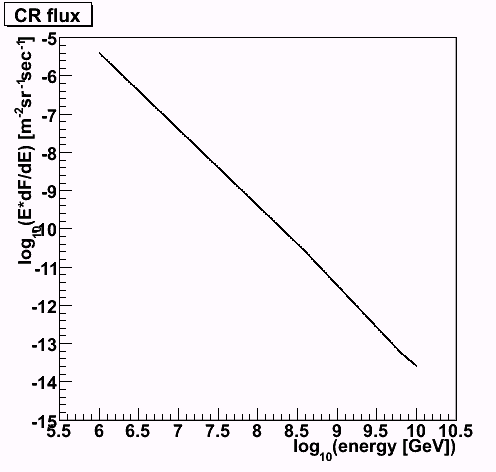The differences between the standard and high energy corsika samples are summarized such as below.
* We weighted CR flux later for the high energy corsika samples. The CR flux is taken from a paper written by Nagano and Watoson. The flux we use is shown below. It's of course consistent with measured CR flux.
|
Total Npe (best portia) Vs CR primary energy
red: proton (HE), purple: iron (HE), blue: polygonato (standard)
closest distance < 300m, NDOM>=80
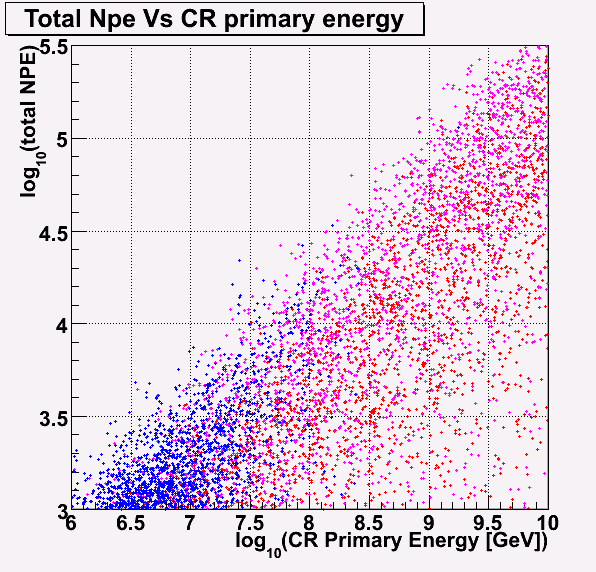
|
Total Npe (best portia) Vs CR primary energy
red: proton (HE), purple: iron (HE), blue: polygonato (standard)
closest distance < 300m, NDOM>=80
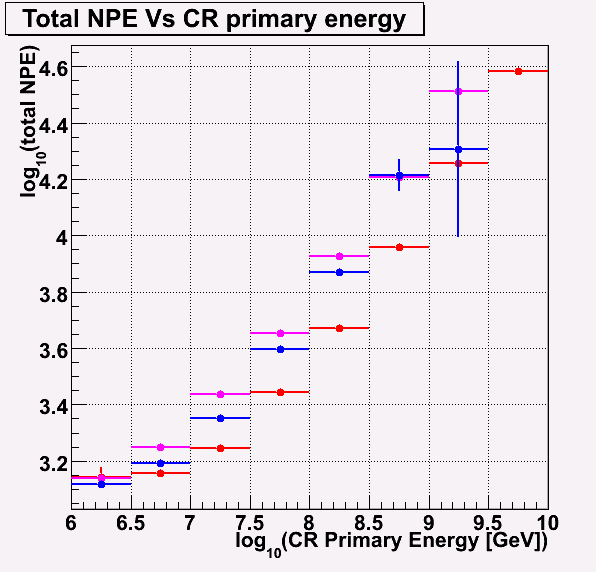
|
|
CR primary energy distribution
red: proton (HE), purple: iron (HE), blue: polygonato (standard)
log(total NPE)>3. is applied in order to remove NDOM effect.
dashed line: NDOM>70, solid line: NDOM>80
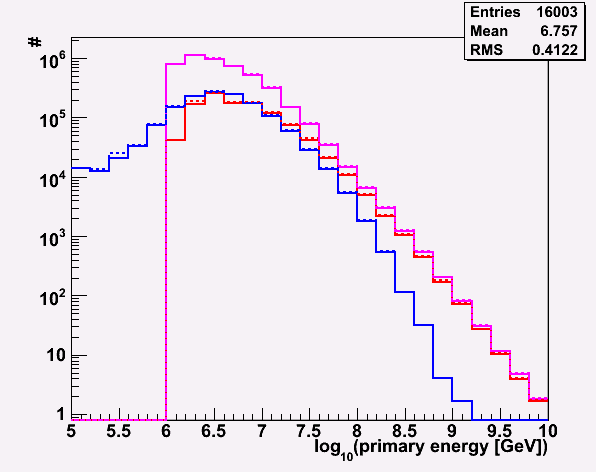
|
NDOM distribution
red: proton (HE), purple: iron (HE), blue: polygonato (standard)
log(primary CR energy)>6.
dashed line: log10(total NPE)>6., solid line: total NPE>0.
As you see, the NDOM distribution is different for low NDOM
between the standard and high energy
corsika samples. This is probably because the trigger condition is different
(There is no trigger for high energy corsika samples).
The distribution between standard and high energy (proton) becomes compatible
after the total NPE cut.
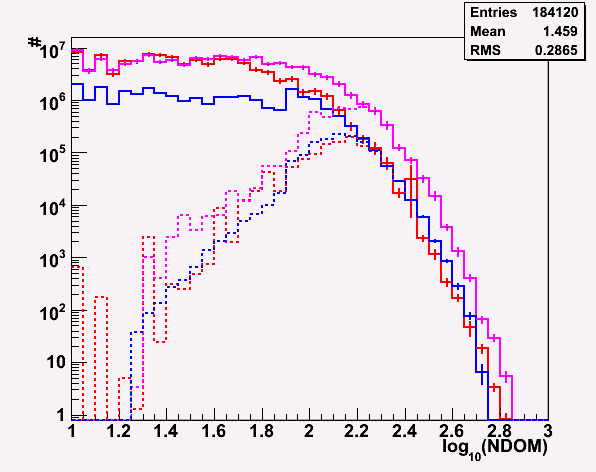
|
total NPE distribution
red: proton (HE), purple: iron (HE), blue: polygonato (standard)
log(primary CR energy)>6.
dashed line: NDOM>70, solid line: NDOM>80
You can see that there is no NDOM effect for events above log10(total NPE)>3.
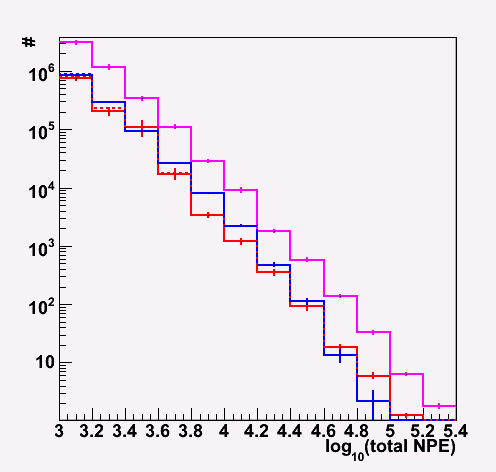
|
|
NDOM Vs CR primary energy
red: proton (HE), purple: iron (HE), blue: polygonato (standard)
closest distance < 300m, NDOM>80, log10(total NPE)>3.
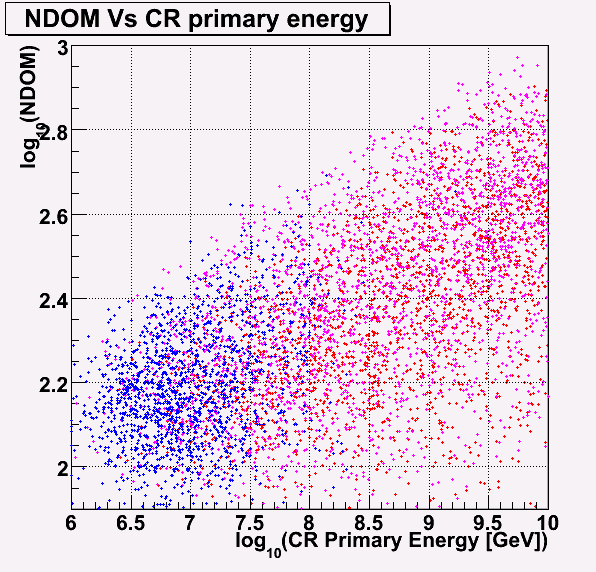
|
NDOM Vs CR primary energy
red: proton (HE), purple: iron (HE), blue: polygonato (standard)
closest distance < 300m, NDOM>80, log10(total NPE)>3.
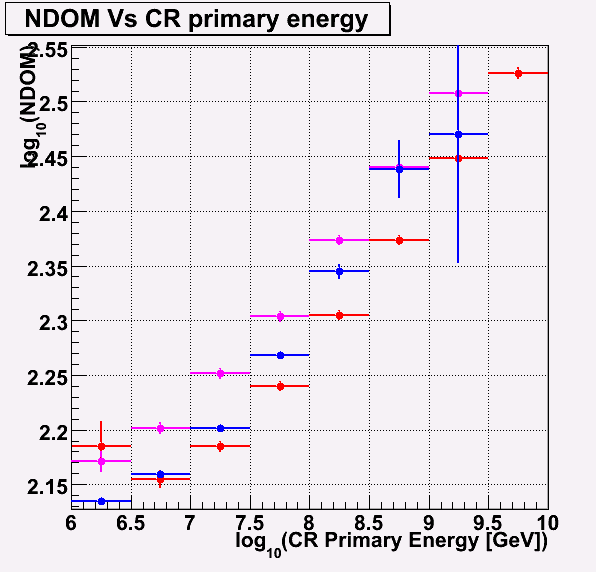
|
|
Zenith angle distribution
red: proton (HE), purple: iron (HE), blue: polygonato (standard)
NDOM>80, log10(total NPE)>3.
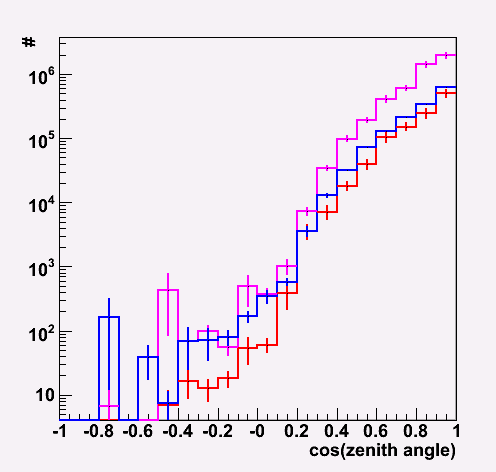
|
|
CoGX distribution
red: proton (HE), purple: iron (HE), blue: polygonato (standard)
NDOM>80, log10(total NPE)>3.
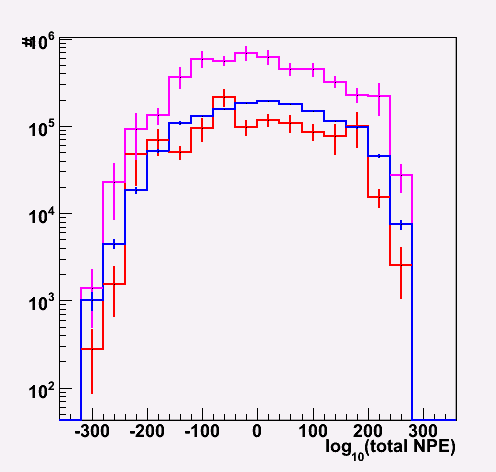
|
CoGY distribution
red: proton (HE), purple: iron (HE), blue: polygonato (standard)
NDOM>80, log10(total NPE)>3.
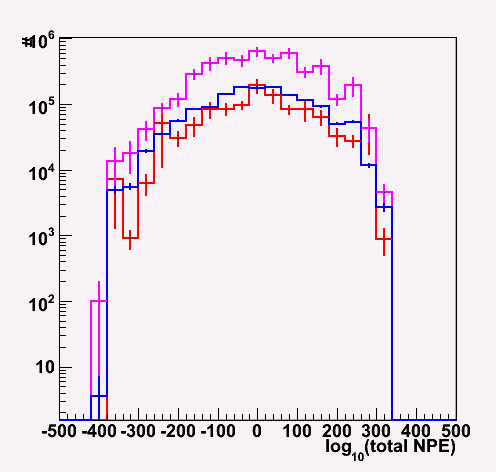
|
CoGZ distribution
red: proton (HE), purple: iron (HE), blue: polygonato (standard)
NDOM>80, log10(total NPE)>3.
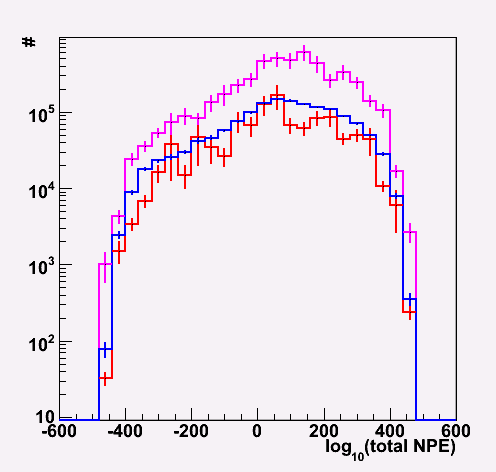
|
